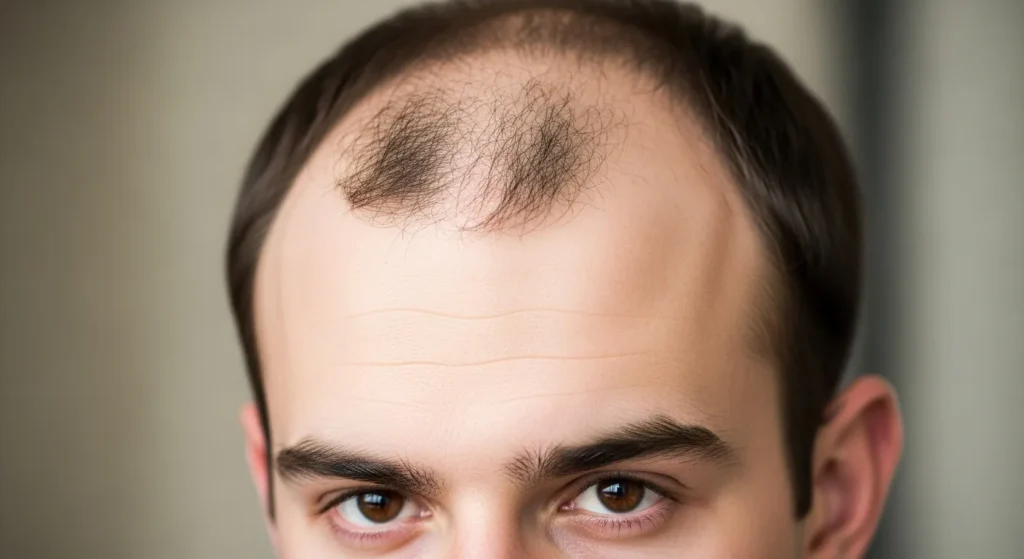Are you concerned that wearing a beanie might be causing your hair to thin or fall out? You’re not alone. Many people wonder, “Do beanies cause hair loss?”—especially during colder months when headwear becomes a daily necessity.
In this article, we’ll explore what science and experts say about this concern, bust common myths, and offer practical tips to protect your scalp and hair. If you’re looking for clarity, reassurance, and actionable advice, you’re in the right place.
Understanding the Concern

Why People Worry About Hats and Hair Loss
It’s a common belief that regularly wearing hats, especially snug ones like beanies, might cause hair to fall out. This concern often stems from noticing loose strands inside the hat or feeling irritation on the scalp. But is there any truth to this?
What Is Hair Loss? (Types, Causes & Common Myths)
Hair loss, medically referred to as alopecia, comes in various forms:
- Androgenetic alopecia (pattern baldness): genetic and hormonal
- Telogen effluvium: stress or illness-related shedding
- Traction alopecia: due to prolonged tension on the hair shaft
Myths like “hats suffocate your scalp” or “constant friction leads to baldness” often circulate without scientific support. Let’s break them down.
Do Beanies Cause Hair Loss?
What Science Says About Hats and Hair Follicles
Wearing a beanie does not directly cause hair loss in healthy individuals. Hair follicles receive oxygen and nutrients from the bloodstream—not the air—so covering your scalp with a hat won’t starve your hair.
[Medical Reviewer Note Needed Here: Link to studies on scalp circulation]
Can Tight Beanies Lead to Traction Alopecia?
Yes, very tight or frequently worn beanies might cause traction alopecia over time. This condition arises from consistent pulling or tension on the hair shaft, especially around the hairline or crown. However, it typically takes months of improper wear to trigger noticeable damage.
Beanies, Sweat, and Scalp Health – Is There a Link?
Sweating under a hat can irritate the scalp if:
- The beanie traps moisture
- It’s worn for long hours without washing
- The fabric doesn’t allow for breathability
Poor scalp hygiene can lead to conditions like seborrheic dermatitis, which may contribute to temporary shedding, not permanent hair loss.
Common Myths About Headwear and Hair Loss
“Hats Suffocate Your Scalp” – True or False?
False. Oxygen to your hair follicles comes from within the body, not the air. Covering your head won’t suffocate or kill hair roots.
“Wearing a Hat Daily Causes Balding” – Debunked
No medical evidence supports this. Unless your hat is causing scalp trauma or tension, wearing it daily won’t cause baldness.
Myth vs. Reality: Comparing Hat Types (Beanies, Caps, Helmets)
- Beanies: Soft, but can trap sweat
- Caps: Often tighter, can cause pressure at the forehead
- Helmets: Heavier, may rub hair away over time
The takeaway? It’s about fit and hygiene, not the style of the hat.
Factors That Cause Hair Loss
Genetics (Male/Female Pattern Baldness)
This is the most common cause of hair loss and has nothing to do with wearing beanies.
Hormonal Changes & Medical Conditions
Thyroid issues, PCOS, and hormonal imbalances can trigger hair thinning.
Stress, Diet, and Lifestyle Factors
Nutritional deficiencies, chronic stress, and crash diets can push hair into the shedding phase (telogen effluvium).
Hair Care Habits That Matter More Than Hats
- Over-styling
- Excessive heat
- Chemical treatments
- Not cleaning the scalp properly
How to Wear Beanies Without Damaging Your Hair
Choose Breathable, Non-Irritating Materials
Opt for cotton or bamboo fabrics that allow airflow and reduce friction.
Avoid Overly Tight or Wet Beanies
Tight beanies can pull at the roots, and damp fabric promotes bacterial growth.
Clean Your Beanies Regularly to Prevent Scalp Issues
Dirty hats can harbor oil, sweat, and bacteria—wash them weekly if used frequently.
Alternate with Other Headwear Styles
Let your scalp breathe and reduce repeated pressure by switching styles.
Should You Stop Wearing Beanies?
Summary of What Matters Most
- Beanies don’t cause permanent hair loss.
- Issues arise when they’re too tight, dirty, or poorly ventilated.
- Genetics, health, and grooming habits are much bigger factors in hair loss.
Safe Beanie-Wearing Habits to Follow
Don’t ignore persistent scalp irritation
Choose soft, breathable materials
Avoid wearing them 24/7
Keep your scalp clean

FAQs About Beanies and Hair Loss
Can sleeping in a beanie cause hair thinning?
Yes, especially if it’s tight or unwashed. Friction overnight may weaken hair shafts over time.
Is it okay to wear beanies every day in winter?
Yes, as long as they’re not too tight, are made from breathable material, and are kept clean.
Will my hair grow back if beanies were causing damage?
If the hair loss was due to tension or irritation (not genetic), removing the cause can allow regrowth over time.
Are other hats worse than beanies for hair loss?
Helmets and hard hats can cause more friction and pressure compared to soft beanies, especially when worn tightly or long-term.
Take Your Step
If you’re concerned about hair thinning, don’t self-diagnose. Book a consultation with Dr. Rana Irfan in Islamabad—an ABHRS-certified hair transplant surgeon—for personalized advice, diagnosis, and advanced treatments like FUE, PRP therapy, and scalp assessments.
